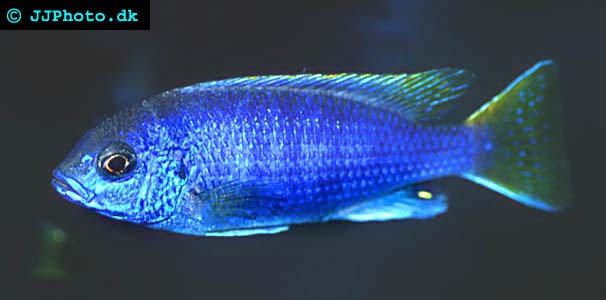Keeping Pseudotropheus
Pseudotropheus species are popular aquarium fish due to their beauty and fascinating behaviours. The genus Pseudotropheus belong to the Cichlidae family, and all Pseudotropheus species are Malawi cichlids. Some of the species that used to belong to the genus Pseudotropheus have today been moved and are today considered Maylandia / Metriaclima species. Malawi cichlids originate from Lake Malawi on the African continent; a lake famous for its diverse fauna and spectacular cichlids. Malawi cichlids are divided into two groups: Haplochromine cichlids (also known as Peacocks or simply “Haps”) and Mbuna cichlids. All the Pseudotropheus species are Mbunas, which means bottom dwellers in one of the local languages spoken around Lake Malawi. Among the most well known Pseudotropheus species kept by aquarists are the Yellow-tailed acei (Pseudotropheus acei), Powder Blue / Pindani (Pseudotropheus socolofi), Pseudotropheus demasoni, Pseudotropheus daktari and Pseudotropheus saulosi.
The genus Pseudotropheus is very diverse and it is always a good idea to do some more specified research regarding the particular Pseudotropheus species you intend to keep. All Pseudotropheus species do however have a lot in common, since they are all bottom dwelling Mbuna cichlids from the same African freshwater lake. They will all prefer a water temperature between 78 and 82° F and a pH value between 7.6 and 8.6.
The cichlids in Lake Malawi have developed to fit a large variety of ecological niches. The Pseudotropheus cichlids inhabit several regions of the lake, and have developed different colourations. The Pseudotropheus cichlids inhabiting Nkhata Bay and Bandawe are dark blue with yellow fins, while the Pseudotropheus cichlids from Eccles Reef are more lilac than blue. If you buy a more palely coloured Pseudotropheus cichlid, it is probably from Ruarwe or Senga Bay. A Yellow-tailed acei (Pseudotropheus acei) from Ngara or Karonga has white fins instead of yellow ones, and the body displays a pale blue colour.
Yellow-tailed acei (Pseudotropheus acei) is one of the most popular Pseudotropheus species among aquarists. It has an elongated body and shows very beautiful pastel colours. It is also easier to keep in aquariums than many other Pseudotropheus species, since it is comparatively docile. The average size of this fish is 10 centimetres (4 inches), and a 160 L (42 gallon) aquarium is large enough. Both male and female Pseudotropheus acei have striking colourations, but can be told apart by their size. A female Pseudotropheus acei is typically smaller than a male.

Pseudotropheus acei. Copyright www.jjphoto.dk
Pseudotropheus acei is a schooling fish, and should not be kept alone. You will be able to enjoy much more of the natural behaviour of these fishes if you keep many Pseudotropheus acei together. In Lake Malawi Pseudotropheus acei commonly forms huge groups around waterlogged wood where they can eat algae, but wood should be avoided in an aquarium since it will tamper with the hardness and pH-value of the water. Algea growth on stones in the aquarium should be encouraged since your Pseudotropheus acei will enjoy eating it. Algea is the natural food source for the Pseudotropheus acei. When you set up an aquarium for the Pseudotropheus acei, or any other rock dwelling Lake Malawi cichlid, you should try to resemble its natural environment in Lake Malawi by including a lot of rocks and caves. The bottom substrate should be sand. The rocks should form a lot of hiding places, since the Pseudotropheus acei likes to shelter in caves and crevices. Pseudotropheus acei is however not at all a shy fish, and you will frequently see your Pseudotropheus acei sleep out in the open.
Didn't find the info you were looking for? Register for free and ask your question in our Aquarium forum !
Our knowledgeable staff usually responds to any question within 24 hours
Related Articles
Aulonocara - Information about AulonocaraBreeding Aulonocara - Information about Breeding Aulonocara
Breeding the Sulphur-Crested Lithobate: Otopharynx lithobates - A detailed article about breeding this Lake Malawi mouthbrooder, together with some useful general tips.
Haplochromis - Information about Haplochromis
Home-made Rocks for the Mbuna Aquarium - A guide to help you mad home made rocks for your Mbuna aquarium.
Malawi Cichlids - Information about Malawi Cichlids
Pseudotropheus - Information about Pseudotropheus
Breeding Pseudotropheus - Information about Pseudotropheus Breeding
Pseudotropheus introduction - Basic information about Pseudotropheus cichlids from lake Malawi.
